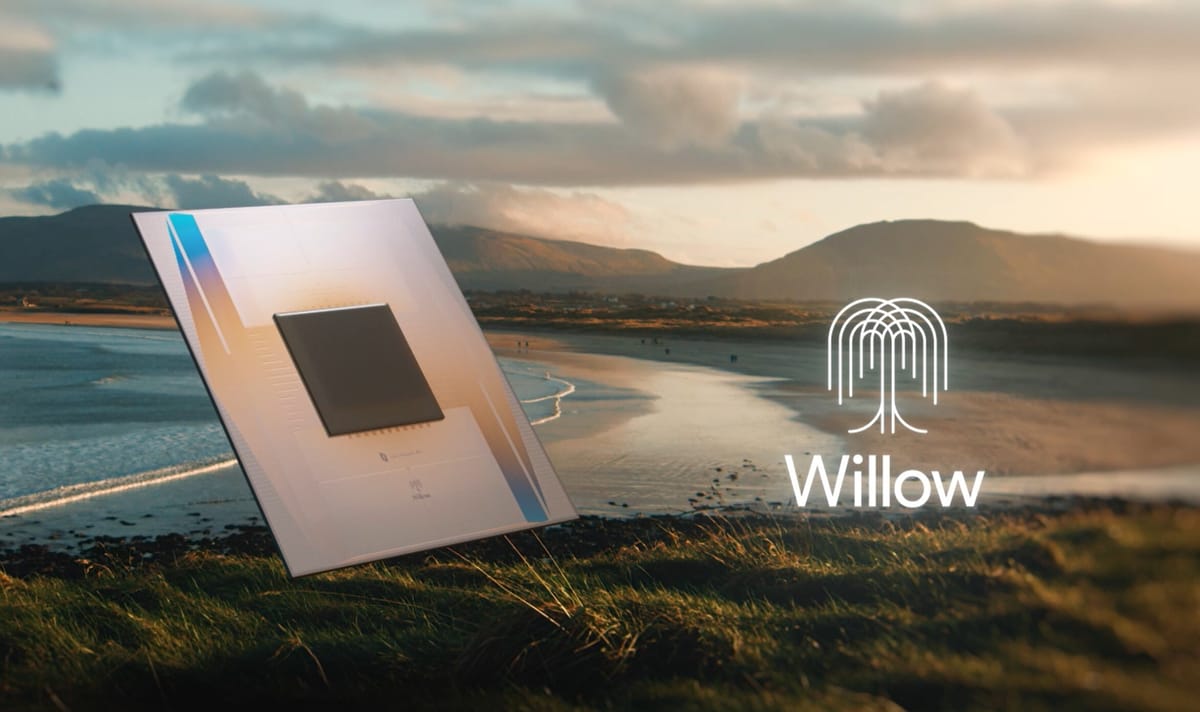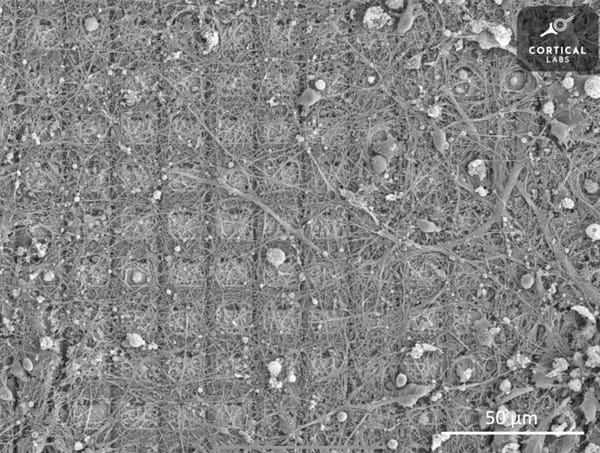A Quantum Leap Forward — Google’s Willow Chip

Two months ago, as you were opening the ninth window on your advent calendar mid-way through Trials, Google announced what may be the biggest breakthrough to date in the field of quantum computing. What has, for a long time, simply been an intellectual curiosity of some physicists came a lot closer to reality. Quantum computing is a field that aims to make operations performed by computers substantially faster. Unlike classical computers such as the one I am using to write this article that use bits which are equal either to one or to zero, quantum computers use qubits which can equal both one, and zero simultaneously (using a principle known as superposition)1. Already, this has allowed computers to simulate the interactions between molecules to expedite the process of bringing new drugs to market2, and this is just the tip of the iceberg. The Willow Chip will accelerate such advances by making breakthroughs in the way quantum computers can fix errors, as well as boost their processing powers.
As a distinct field sitting somewhere between physics, computer science, and engineering, quantum computing emerged in the 1980s. While it is hard to link it to any one person, the first milestone is often considered to be Feynman’s 1981 paper called “simulating physics with computers.”3 In it, he argued that traditional computers are limited when attempting to discuss classical systems, because particles can exist in superpositions and entanglements (particles are linked, potentially affecting each other instantly over distance). For Feynman, the implications of this were clear-that in order to simulate nature accurately, computers built on fundamentally different principles were needed. The next major advancement came in 1994 when Peter Shor introduced his namesake algorithm4 for factorising large composite numbers. While the algorithm was as yet unable to perform large-scale factorisations, it sparked interest in quantum computing from governments, and corporations because of its potential applications to encryption in allowing even larger numbers to act as encryption keys. In 2001, IBM first applied the algorithm successfully on a computer, factorising the number fifteen into a three and a five. While this may not sound impressive, and is currently examined in Mathematics Trials in F Michaelmas, it was an incredible proof-of-concept for quantum computing. In 2019, Google unveiled its Sycamore Chip5, establishing its supremacy among its competitors in the industry. This chip managed to solve a problem in three minutes that would have taken even the most powerful classical supercomputers ten thousand years to solve.
The Willow Chip was a more natural successor to Sycamore; closer to revolutionary than evolutionary. The most significant change came in error correction. Because qubits can exist in superposition, they are susceptible to errors from the environment around them. If this error is not corrected, then qubits are unable to perform useful computations. To remedy this, Google linked the qubits together in a lattice using a technique called surface code stabilisation. The reason that this technique is so effective is that as the number of qubits increases, the error rate decreases6. Therefore, Google scaled similar processes in the Sycamore Chip to the Willow Chip, resulting in its 105-qubit architecture. While the Sycamore Chip’s record in solving problems much faster than classical computers was impressive, the Willow’s is markedly better. It has been able to solve solving problems in minutes that classical supercomputers would take septillions of years to complete.
While the Willow Chip is a step forward to achieving practical quantum supercomputers, there remain unsolved problems. Google has got to an impressive 105-qubits, but at least a thousand times as many are needed to be of practical use. Before even considering the scale, one of the most significant limitations of quantum computing is the need for extreme cooling to around 0K (-273°C). In an increasingly eco-conscious world, the use of such large amounts of electricity will be harder to justify. Moreover, while Google is ahead at the moment, competitors are hot on its heels. Notably, several Chinese firms have made substantial advancements in the last few years, and are continuing to gain on established American ones.
However, even with its current limitations, the Willow is already pushing the boundaries for uses of quantum computing, opening up new avenues such as financial or climate modelling, as well as cryptography. While its advances are certainly noteworthy, this is merely a stepping stone. With the current pace of technological progression, it would not be surprising if the Willow Chip is surpassed within the year. Nonetheless, there are still hurdles that need to be overcome before quantum computers leave the realm of intellectual curiosity, and become a commercially viable product.
1 Schneider, J. and Smalley, I. (2024). Quantum computing. [online] Ibm.com. Available at: https://www.ibm.com/think/topics/quantum-computing.
2 Santagati, R., Aspuru-Guzik, A., Babbush, R., Degroote, M., González, L., Kyoseva, E., Moll, N., Oppel, M., Parrish, R.M., Rubin, N.C., Streif, M., Tautermann, C.S., Weiss, H., Wiebe, N. and Utschig-Utschig, C. (2024). Drug design on quantum computers. Nature Physics, [online] pp.1–9. doi:https://doi.org/10.1038/s41567-024-02411-5.
3 Feynman, R.P. (1982). Simulating physics with computers. International Journal of Theoretical Physics, 21(6-7), pp.467–488. doi:https://doi.org/10.1007/bf02650179.
4 Skosana, U. and Tame, M. (2021). Demonstration of Shor’s factoring algorithm for N=21 on IBM quantum processors. Scientific Reports, 11(1). doi:https://doi.org/10.1038/s41598-021-95973-w.
5 Arute, F. et al. (2019). Quantum supremacy using a programmable superconducting processor. Nature, [online] 574(7779), pp.505–510. doi:https://doi.org/10.1038/s41586-019-1666-5.
6 Hopkins, B. (2024). Google’s Willow Chip: Quantum Leap Or Quantum Hype? [online] Forrester. Available at: https://www.forrester.com/blogs/googles-willow-chip-quantum-leap-or-quantum-hype/.



